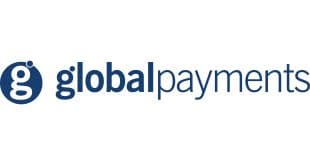Responding in part to unique security issues created by electronic image exchange in the U.S., the nation's largest settler of clearinghouse check volume this week introduced a registry for what it calls image-survivable security features to protect check images from fraud. The registry, operated by the Dallas-based National Clearing House (NCHA), is intended to help merchants, banks of first deposit, paying banks, and check-verification services determine whether images are genuine. So far, five companies that provide such features have entered eight marks with the registry. Frank Jaffe, president of MorSecure, a security consultancy, and project manager for the registry, estimates there are 13 image-survivable marks, or features that don't lose resolution or usefulness after imaging, but that number is rising. “There are more coming out all the time,” he says. He expects more vendors will register their security marks, and as they do, he says, check-verification companies will begin using the registry, which serves up files that can be downloaded into verification software. Currently, there are no fees to enter a mark with the registry or to download files from it. The files work in conjunction with a common message standard currently under development by an American National Standards Institute committee to allow any entity accepting images to determine whether an image has a mark, and if so whose mark it is. To each mark, the registry assigns a unique number that becomes part of the file in the registry. “It's aimed at thwarting fake images,” Jaffe says. An example of an image-survivable mark is a bar code that allows a machine to determine the validity of a check signature, Jaffe says. A common security feature that doesn't survive imaging is microprint, the tiny lettering that forms the signature line on many checks. This lettering, while useful on paper checks, loses resolution upon imaging. The key is to focus on features that work in the absence of a paper source document, since original checks are destroyed upon imaging. “Everything that used to rely on access to a physical piece of paper doesn't work when you don't have access to a physical piece of paper,” Jaffe says. Though the Check Clearing Act for the 21st Century (Check 21) didn't create the need for new security features, it “provided the urgency for adoption” of them, Jaffe says. Check 21, which gives legal authority to paper printouts of check images, has encouraged banks to invest in image exchange. Total image-exchange volume, including both the printouts, also known as substitute checks, and images cleared as images, reached 217.7 million in July, up from 20.3 million a year earlier (Digital Transactions News, Sept. 20). Meanwhile, attempted check fraud against banks totaled $5.5 billion in 2003, according to American Bankers Association numbers cited by Jaffe. Some 88% of these attempts were detected before losses were sustained. Companies that have registered their marks so far are ASD Corp., Cheque-Guard Corp., Fiserv Imagesoft, John H. Harland Co., and MediaSec Technologies. NCHA was chosen by the Financial Services Technology Consortium, an organization made up of financial-services companies to research technology, to run the registry. It handles more than 6.7 billion items yearly for 709 check-processing centers representing 539 banks, as well as 20 clearing houses. It is owned by financial institutions.
Check Also
Global Payments Details the Promise And Perils of Agentic Commerce
The promise and potential perils of agentic commerce as a digital technology are among the …




